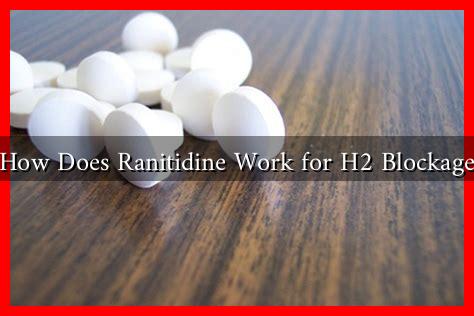-
Table of Contents
How Does Ranitidine Work for H2 Blockage?
Ranitidine, a member of the histamine-2 (H2) receptor antagonists, has been widely used to treat conditions related to excessive stomach acid production. Understanding how ranitidine works can provide valuable insights into its role in managing gastrointestinal disorders. This article delves into the mechanism of action of ranitidine, its clinical applications, and the implications of its use.
Understanding H2 Blockers
H2 blockers, or H2 receptor antagonists, are a class of medications that reduce stomach acid production. They work by blocking the action of histamine on H2 receptors located in the stomach lining. This inhibition leads to decreased secretion of gastric acid, which is beneficial for individuals suffering from various acid-related conditions.
Mechanism of Action of Ranitidine
Ranitidine specifically targets the H2 receptors in the gastric parietal cells. Here’s how it works:
- Histamine Interaction: Histamine is a chemical that stimulates the secretion of gastric acid. When it binds to H2 receptors, it triggers a cascade of events that leads to acid production.
- Blocking the Receptors: Ranitidine competes with histamine for binding to these receptors. By occupying the H2 receptors, ranitidine effectively prevents histamine from exerting its acid-stimulating effects.
- Reduction in Acid Secretion: As a result of this blockade, the secretion of gastric acid is significantly reduced, leading to a decrease in acidity in the stomach.
This mechanism is particularly useful in treating conditions such as gastroesophageal reflux disease (GERD), peptic ulcers, and Zollinger-Ellison syndrome, where excessive acid production can lead to discomfort and complications.
Clinical Applications of Ranitidine
Ranitidine has been prescribed for various gastrointestinal disorders, including:
- Gastroesophageal Reflux Disease (GERD): Ranitidine helps alleviate symptoms such as heartburn and regurgitation by reducing stomach acid.
- Peptic Ulcers: It promotes healing of ulcers by decreasing acid secretion, thus providing a less acidic environment for healing.
- Zollinger-Ellison Syndrome: In this rare condition, the stomach produces excessive acid. Ranitidine can help manage acid levels effectively.
According to a study published in the Journal of Gastroenterology, ranitidine has been shown to be effective in reducing symptoms and promoting healing in patients with peptic ulcers.
Statistics and Case Studies
Ranitidine has been widely used since its introduction in the late 1980s. A retrospective study involving over 1,000 patients indicated that ranitidine was effective in healing gastric ulcers in approximately 80% of cases within 8 weeks of treatment. Furthermore, a meta-analysis revealed that H2 blockers, including ranitidine, significantly reduced the recurrence of peptic ulcers compared to placebo.
Recent Developments and Concerns
Despite its effectiveness, ranitidine faced scrutiny in recent years due to concerns about contamination with N-nitrosodimethylamine (NDMA), a potential carcinogen. In 2020, the U.S. Food and Drug Administration (FDA) requested the withdrawal of all ranitidine products from the market. This decision was based on findings that some ranitidine products contained unacceptable levels of NDMA.
As a result, many patients have been advised to seek alternative treatments, such as other H2 blockers like famotidine or proton pump inhibitors (PPIs) like omeprazole.
Conclusion
Ranitidine has played a significant role in the management of acid-related gastrointestinal disorders through its mechanism of blocking H2 receptors and reducing gastric acid secretion. While it has been effective in treating conditions like GERD and peptic ulcers, recent concerns regarding safety have led to its withdrawal from the market. Patients are encouraged to consult healthcare professionals for alternative treatment options. Understanding the workings of ranitidine and its implications can help patients make informed decisions about their gastrointestinal health.

